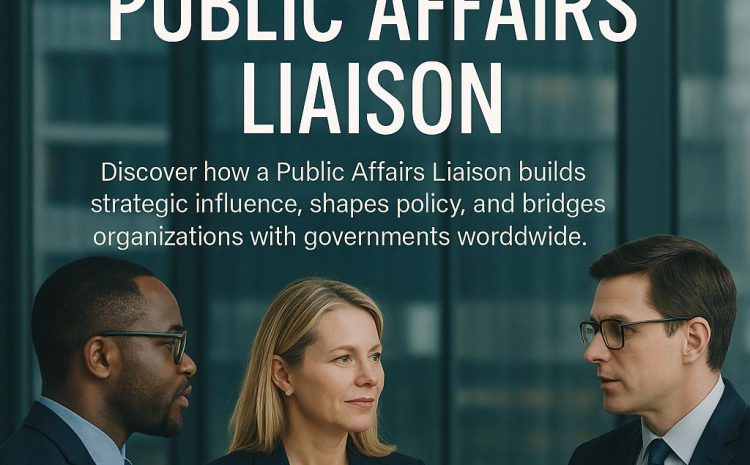
In today’s interconnected world, where perception shapes policy and narrative can determine national interest, the role of a Public Affairs Liaison has become not only relevant but indispensable. Whether operating within governments, private corporations, or international organizations, a public affairs liaison acts as a strategic bridge, facilitating dialogue, influencing policy, and ensuring that key interests are communicated effectively to stakeholders.
But what does this role really entail? Why is it increasingly sought after in sectors as diverse as diplomacy, energy, tech, and finance? And how can individuals or organizations leverage this function to achieve meaningful influence in a crowded global landscape?
Understanding the Role: What Is a Public Affairs Liaison?
A Public Affairs Liaison is a professional responsible for managing the flow of information and fostering productive relationships between an organization and external decision-makers, most often governments, regulatory agencies, public institutions, or the media.
They ensure that the organization’s positions, values, and needs are clearly understood by key influencers and that changes in public policy or sentiment are relayed accurately and promptly back to internal leadership.
Key Responsibilities
- Monitoring legislative and regulatory developments
- Building relationships with policymakers, media outlets, and community leaders
- Advising leadership on political risks and opportunities
- Facilitating strategic communication during crises or public campaigns
- Organizing stakeholder engagement events and government relations briefings
This dual-facing position requires both political intelligence and organizational empathy. The liaison must interpret and influence the external landscape while safeguarding the internal brand and interests of the organization.
Where Public Affairs Liaisons Operate: Sectors and Scope
The demand for public affairs experts is rising across multiple sectors. Their roles can vary depending on industry focus, geopolitical environment, and institutional mission.
1. Corporate Sector
Multinational corporations, especially those in regulated industries like energy, pharmaceuticals, and telecommunications, rely heavily on public affairs liaisons to stay compliant and competitive. For example, when Meta faced regulatory scrutiny across the EU over data protection, it was their public affairs team that engaged policymakers to explain the company’s position and avoid blanket bans.
2. Nonprofit and International Organizations
Organizations such as Amnesty International or the United Nations deploy liaisons to interact with governments and civil society groups, shaping international policy around human rights, sustainability, and development goals.
3. Diplomatic and Governmental Channels
In some cases, individuals are appointed as 名誉领事 或 Ambassadors-at-Large, serving as high-level liaisons between states or institutions. While they may not be career diplomats, these figures often wield considerable influence, particularly when backed by credible private-sector experience. (Learn more about non-career diplomatic appointments on 威廉·布莱克斯通国际.)
Core Skills and Qualifications
Success as a public affairs liaison demands a hybrid profile—equal parts strategist, communicator, and relationship-builder.
Essential Competencies:
- Political acumen: Understanding how decisions are made and influenced in local, national, or international bodies.
- Communication mastery: Writing and speaking persuasively to diverse audiences.
- Stakeholder mapping: Identifying who matters, why, and how best to engage.
- Crisis navigation: Maintaining message control and reputational defense under pressure.
Common Backgrounds:
Many public affairs professionals come from journalism, law, international relations, or political science. Experience in legislative offices, think tanks, or corporate public relations can also be a strong foundation.
Case Study: A Public Affairs Liaison in Action During Crisis
Consider the case of the 2021 Suez Canal blockage. When the Ever Given container ship obstructed one of the world’s busiest trade routes, global stakeholders—from logistics firms to energy traders—rushed to mitigate the fallout. Companies with established public affairs liaisons were able to communicate directly with Egyptian authorities, customs officials, and international insurers to fast-track rerouting strategies and influence early decisions about cargo prioritization.
Organizations without this function were left guessing, reacting to news cycles instead of shaping them.
This example demonstrates how a public affairs liaison is not just about soft skills or networking—it’s about strategic survivability in volatile systems.
Public Affairs vs. Public Relations vs. Government Relations
While the terms are sometimes used interchangeably, their functions differ subtly but importantly:
| Function | Focus Area | Primary Audience |
|---|---|---|
| Public Relations | Media representation, public image | Consumers, press |
| Government Relations | Policy advocacy, lobbying | Lawmakers, regulators |
| Public Affairs Liaison | Bridging internal strategy with external influence | All of the above |
A public affairs liaison often encompasses elements of both PR and GR, but with an elevated mandate to synthesize internal objectives with the realities of public and political ecosystems.
Strategic Value: Why Your Organization Needs One
1. Policy Influence
An effective liaison can shape draft legislation before it becomes law—through white papers, testimony, or direct engagement. In the tech sector, for example, public affairs teams were instrumental in negotiating favorable data storage rules in emerging markets.
2. 声誉管理
Organizations with visible, proactive public affairs strategies tend to have stronger reputations. They’re seen as partners in progress rather than obstacles to regulation.
3. Crisis Avoidance
Many reputational disasters begin as small regulatory oversights. A liaison can flag risks early, manage community opposition, and avert media blowback.
Trends Shaping the Role
Public affairs liaison work is not static. It’s being redefined by the following trends:
1. Rise of ESG and Stakeholder Capitalism
Environmental, Social, and Governance (ESG) criteria have moved to the center of investor and regulatory focus. Liaisons are now expected to demonstrate not just compliance, but leadership in areas like sustainability and diversity.
2. Digital Influence and Algorithmic Transparency
With the explosion of AI and algorithm regulation, tech companies need liaisons who understand how digital policies are being drafted and how to shape them responsibly.
3. Geopolitical Realignment
As global alliances shift—from BRICS expansion to NATO re-engagement—public affairs teams must navigate increasing complexity in jurisdictional priorities and foreign policy realignments.
Getting Started: How to Appoint or Become a Public Affairs Liaison
For organizations looking to strengthen their public affairs function, the following steps are advisable:
- Assess your exposure points: Identify which external entities have the most influence over your operations.
- Hire or designate a liaison: Choose someone with both internal credibility and external fluency.
- Map stakeholders and timelines: Know when and how to engage each external player.
- Develop a messaging matrix: Ensure consistent communication across platforms and people.
- Invest in training: Equip your liaison with diplomatic protocol, media training, and political literacy.
Individuals interested in this career should consider internships in government offices, join policy institutes, or explore consulting firms that offer liaison support—such as 威廉·布莱克斯通国际.
Real-World Example: International Consulting and Diplomatic Facilitation
A notable illustration of a public affairs liaison’s scope can be seen in non-career diplomatic facilitation, where firms like William Blackstone Internacional have helped clients secure honorary consular roles through structured public affairs engagements. These appointments are not simply ceremonial—they are strategic diplomatic roles that require high-level communication with ministries, consulates, and political stakeholders.
For example, a client with a background in renewable energy innovation was positioned as a suitable honorary consul to a Caribbean nation due to shared interests in sustainable development and bilateral economic ties. The liaison process involved not only vetting the client’s background but also crafting policy-relevant talking points and conducting a pre-appointment review with a former ambassador. These steps ensured that the appointment was both credible and impactful.
External Validation: Demand for Policy Communicators Rising
According to the U.S. Bureau of Labor Statistics, employment for public relations specialists (a related category) is expected to grow by 6% from 2022 to 2032, with faster-than-average growth for those specializing in political communication or global affairs. In the UK, the Chartered Institute of Public Relations (CIPR) has highlighted a similar rise in demand for roles focused on government affairs and stakeholder influence. Source: CIPR State of the Profession Report
Conclusion: The Public Affairs Liaison as a Strategic Asset
In an era where institutions are scrutinized, policies are publicized in real-time, and narratives shape entire industries, a public affairs liaison is no longer optional. It’s a critical strategic function—one that blends diplomacy, advocacy, and operational foresight.
For clients looking to gain influence in government circles, align with global policy trends, or even pursue formal diplomatic roles, the support of an experienced liaison can be transformative.
威廉·布莱克斯通国际 has assisted many clients in exactly this way—offering not only connections but clarity, credibility, and cross-border expertise. Whether you seek to engage at a national level or build a transnational presence, a public affairs liaison may be your most valuable ally.
Explore our blog for more insights or learn more.













